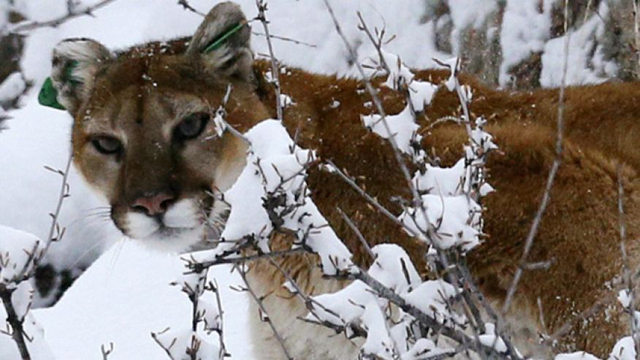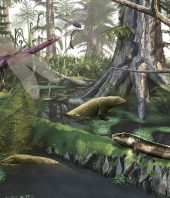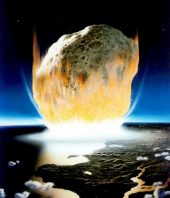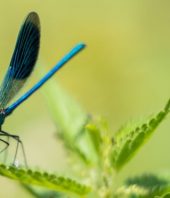Finicky eaters usually do not survive mass extinction events, suggests a new study on prehistoric big cats.
Cougars, which will eat meat, guts, bones — the proverbial whole enchilada, survived the mass extinction event 12,000 years ago, while their finicky cousins the saber tooth cat and American lion bit the dust. The study, published in the journal Biology Letters, determined that eating habits probably saved cougars, and possibly jaguars too.
What Did Prehistoric Humans Eat? Photos
"Before the Late Pleistocene extinction, six species of large cats roamed the plains and forests of North America," co-author Larisa R.G. DeSantis, assistant professor of earth and environmental sciences at Vanderbilt University, said in a press release. "Only two -- the cougar and jaguar -- survived. The goal of our study was to examine the possibility that dietary factors can explain the cougar’s survival."
She and co-author Ryan Haupt of the University of Wyoming analyzed the teeth of ancient cougars, saber-tooth cats and American lions excavated from the famous La Brea Tar Pits in Los Angeles.
The researchers did this with a new technique called "dental microwear texture analysis." It uses a high-powered microscope to produce three-dimensional images of tooth surfaces. These images reveal tooth wear patterns that suggest how, and what, the animals often ate.
Chowing down on red meat, for example, produces small parallel scratches, while chomping on bones adds larger, deeper pits.
DeSantis and others previously found that the dental wear patterns of the extinct American lions closely resembled those of modern cheetahs, which are extremely finicky eaters that mostly consume tender meat and rarely gnaw on bones.
Saber-tooth cats were instead similar to African lions that chewed on both flesh and bone.
Some variation existed among the La Brea cougars, but many showed wear patterns closer to those of modern hyenas, which consume almost the entire body of their prey, bones and all.
Do Some Animals Get a Taste for Human Blood?
"This suggests that the Pleistocene cougars had a 'more generalized' dietary behavior," DeSantis said. "Specifically, they likely killed and often fully consumed their prey, more so than the large cats that went extinct."
To this day, modern cougars are opportunistic predators and scavengers of abandoned carrion. They fully consume carcasses of both small and medium-sized prey.
Finicky socialized house cats, of which there are many, generally don't have to worry. As long as an owner is around to provide tasty vittles, they'll probably live on.
Source: Fox News
http://www.foxnews.com/science/2014/04/23/secret-to-surviving-mass-extinctions-dont-be-picky-eater/






